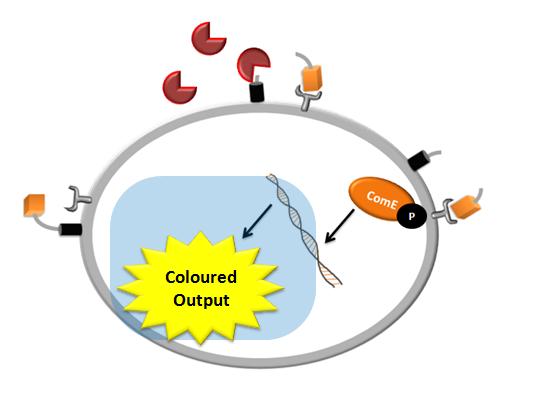Team:Imperial College London/Modelling/Output/Objectives
From 2010.igem.org
(Difference between revisions)
m |
m |
||
| (10 intermediate revisions not shown) | |||
| Line 1: | Line 1: | ||
{{:Team:Imperial_College_London/Templates/Header}} | {{:Team:Imperial_College_London/Templates/Header}} | ||
| - | {| style="width:900px;background:#f5f5f5;text-align:justify;font-family: helvetica, arial, sans-serif;color:#555555;margin-top: | + | {{:Team:Imperial_College_London/Templates/ModellingHeaderF}} |
| + | {{:Team:Imperial_College_London/Templates/ModellingOutputHeader}} | ||
| + | {| style="width:900px;background:#f5f5f5;text-align:justify;font-family: helvetica, arial, sans-serif;color:#555555;margin-top:5px;" cellspacing="20" | ||
| + | |style="font-family: helvetica, arial, sans-serif;font-size:2em;color:#ea8828;"|Objectives | ||
|- | |- | ||
| - | | | + | |Our novel concept of amplifying our output by incorporating enzymes raised some important questions that needed to be answered: |
| - | + | #How beneficial is it to incorporate the enzyme amplification step? We need to compare the speed of response between transcription and translation with 1-, 2- or 3-step amplification. | |
| - | + | #How many amplification steps are beneficial? Will the addition of further amplification steps introduce considerable time delays? | |
| - | + | #Which enzymes should be used for the 3rd amplifying step? TEV (which is the common enzyme for both 2- and 3-step amplification) or HIV1? | |
| - | + | ||
| - | + | ||
| - | + | ||
| - | + | ||
| - | + | ||
| - | #How beneficial is it to incorporate the enzyme amplification step? We need to compare the speed of response between transcription and translation with 1- | + | |
| - | #How many amplification steps are beneficial? Will the addition of further amplification steps introduce considerable time delays? | + | |
| - | #Which enzymes should be used? TEV or HIV1? | + | |
In order to answer these questions, we would have to model this system. The results of the computer models would enable us to decide which design would be the most efficient one. This design would then be put forward to be built in labs. | In order to answer these questions, we would have to model this system. The results of the computer models would enable us to decide which design would be the most efficient one. This design would then be put forward to be built in labs. | ||
| + | <div ALIGN=CENTER> | ||
| + | {| style="width:404px;background:#e7e7e7;text-align:center;font-family: helvetica, arial, sans-serif;color:#555555;margin- top:5px;padding: 2px;" cellspacing="5"; | ||
| + | |- | ||
| + | |[[Image:IC_Overview_Fast_Response1.jpg|400px]] | ||
| + | |- | ||
| + | |The blue shadow indicates which part of the whole system the fast response model is simulating. | ||
| + | |} | ||
| + | </div> | ||
| + | |- | ||
| + | |style="font-family: helvetica, arial, sans-serif;font-size:2em;color:#ea8828;" align="right"|[[Team:Imperial_College_London/Modelling/Output/Detailed_Description | Click here for a detailed description of this model...]] | ||
|} | |} | ||
Latest revision as of 03:35, 28 October 2010
| Modelling | Overview | Detection Model | Signaling Model | Fast Response Model | Interactions |
| A major part of the project consisted of modelling each module. This enabled us to decide which ideas we should implement. Look at the Fast Response page for a great example of how modelling has made a major impact on our design! | |
| Objectives | Description | Results | Constants | MATLAB Code |
| Objectives |
Our novel concept of amplifying our output by incorporating enzymes raised some important questions that needed to be answered:
In order to answer these questions, we would have to model this system. The results of the computer models would enable us to decide which design would be the most efficient one. This design would then be put forward to be built in labs. |
| Click here for a detailed description of this model... |
 "
"




